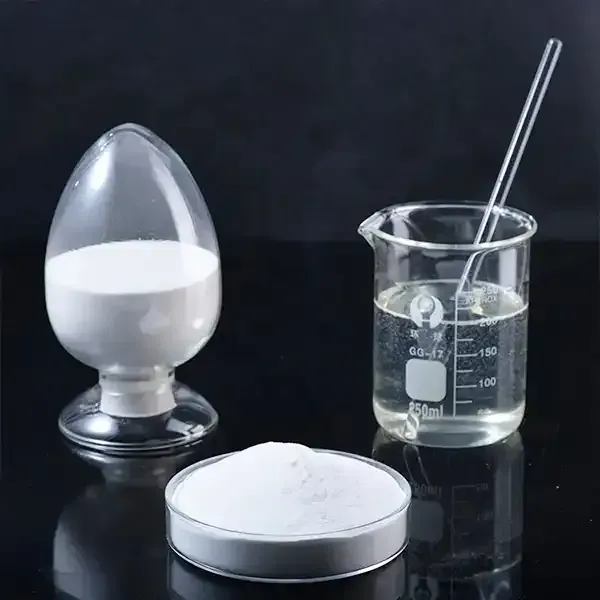The Versatile World of Cellulose Ethers
Cellulose ethers are a group of chemical compounds derived from cellulose, the most abundant organic polymer on Earth. They are produced through the etherification of cellulose, a natural polymer found in the cell walls of plants. Given their unique properties, cellulose ethers have found a wide range of applications in various industries, including food, pharmaceuticals, cosmetics, and construction.
The primary cellulose ethers include methyl cellulose (MC), hydroxypropyl methylcellulose (HPMC), carboxymethyl cellulose (CMC), and ethyl cellulose (EC). Each type possesses distinct characteristics that make it suitable for particular applications. For example, methyl cellulose is widely used as a thickening agent and stabilizer in food products due to its ability to form gels in cold water. Hydroxypropyl methylcellulose, on the other hand, is popular in the pharmaceutical industry as a controlled-release agent for drugs, allowing for more effective therapeutic outcomes.
One of the standout characteristics of cellulose ethers is their excellent water solubility and gel-forming abilities. When mixed with water, these compounds can create viscous solutions or gels, which are important in formulating products that require specific textural and rheological properties. The ability to modulate viscosity is particularly crucial in food formulations, where viscosity can significantly influence mouthfeel, stability, and shelf life. In the construction industry, cellulose ethers are added to cement and mortar, improving workability and water retention while preventing cracking.
Another noteworthy feature of cellulose ethers is their non-toxic and biodegradable nature, making them suitable for use in products aimed at consumers who are increasingly aware of environmental sustainability
. As a result, cellulose ethers are often preferred over synthetic polymers that may pose health risks or contribute to environmental pollution.cellulose ethers

The pharmaceutical sector has also embraced cellulose ethers for various applications. They are used as excipients in tablets and capsules, acting as binders, disintegrants, and film formers. Their ability to control the release of active pharmaceuticals allows for the development of extended-release formulations, enhancing patient compliance and therapeutic effectiveness. Furthermore, the gel-forming properties of cellulose ethers make them advantageous in topical formulations, where they can provide hydration and enhance the skin's barrier function.
In cosmetic products, cellulose ethers are valued for their ability to enhance texture and stability. They contribute to the creaminess of lotions and gels while ensuring that these products maintain their desired viscosity over time. In addition, cellulose ethers can help stabilize emulsions, preventing separation between oil and water phases in cosmetic formulations.
Despite their many applications, the production of cellulose ethers is not without challenges. The manufacturing process requires careful control of reaction conditions to ensure the desired properties are achieved. Factors such as temperature, concentration, and reaction time are all critical in determining the molecular weight and degree of substitution of the final product. Any variation can lead to significant differences in performance, making consistency a key factor in the cellulose ether industry.
Research and development in the field of cellulose ethers continue to evolve. Innovations aim to enhance their functionality, such as improving solubility in organic solvents, increasing gel strength, and developing new derivatives that cater to specific industrial needs. Furthermore, the exploration of sustainable sourcing of cellulose, through practices such as recycling or utilizing waste biomass, is gaining traction as industries increasingly prioritize sustainability.
In conclusion, cellulose ethers are versatile compounds with a wide array of applications across multiple sectors. Their unique properties, including water solubility, thickening capacity, non-toxic nature, and biodegradability, make them suitable for use in food, pharmaceuticals, cosmetics, and construction. As industries continue to innovate and adapt to changing consumer demands and environmental considerations, cellulose ethers are likely to play an increasingly important role in developing sustainable and effective products. The future of cellulose ethers looks promising, poised to contribute to a wide range of formulation technologies that meet modern demands while embracing sustainability.
-
Rdp Powder: Key Considerations for Wholesalers in the Building Materials IndustryNewsJul.08,2025
-
Key Considerations for Wholesalers: Navigating the World of Hpmc - Based ProductsNewsJul.08,2025
-
Hpmc Detergent: Key Considerations for WholesalersNewsJul.08,2025
-
Key Considerations for Wholesalers: China Hpmc For Tile Adhesive, Coating Additives, Concrete Additives, and MoreNewsJul.08,2025
-
Crucial Considerations for Wholesalers: Navigating the World of Construction MaterialsNewsJul.08,2025
-
Key Considerations for Wholesalers Sourcing Additive For Cement, Additive For Concrete, Additive For Putty from Additive Manufacturer Shijiazhuang Gaocheng District Yongfeng Cellulose Co., Ltd.NewsJul.08,2025




